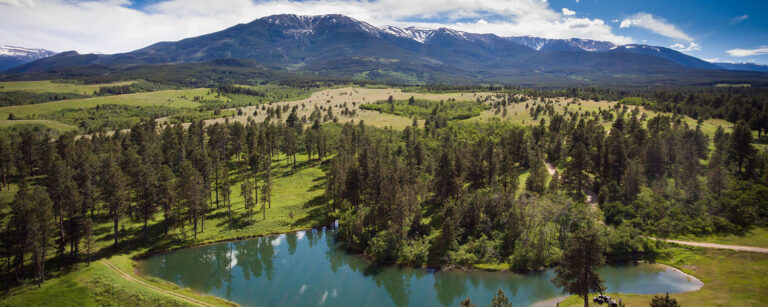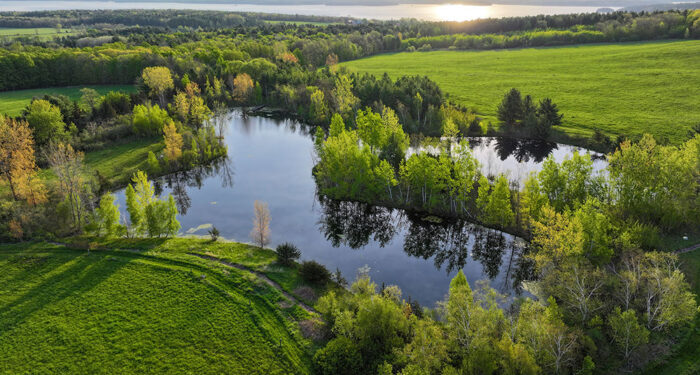An In-Depth Read on Protecting and Maintaining Your Property Water Rights
By: Deborah Stephenson and Stephen R. Brown

Focusing on operational and administrative practices can help maintain your water rights. Read on to find out how.
How focusing on operational and administrative practices that can help maintain your water rights by first ensuring that all filings and administrative reporting requirements are up to date, and secondly, by keeping your rights active to protect them from abandonment.
The initial registration and ongoing reporting requirements for your water rights vary from state to state and by type of water entitlement. For example, in most western states small water users can be exempt from a lengthy permitting process. This instance is commonly referred to as an “exempt filing.” However, water users are still typically required to register these small water uses with the state or local groundwater management agency. Another example is that certain types of water certificates, permits, and change authorizations may have annual reporting requirements related to the permit holders’ annual water diversions. Other reporting requirements call for weekly monitoring of the physical flow rates in the source of supply to ensure that pre-existing water rights are met before any new permit is utilized.
Other examples of both water use registration and subsequent reporting requirements are found in Texas and California. In Texas, the state water planning process, originating in the mid-1950s, created regional planning areas and smaller groundwater conservation districts (GCDs) within the regional planning areas. There are no statewide requirements for registration or reporting of groundwater use. Instead, the local GCDs are tasked with creating groundwater management goals and then implementing groundwater registration and reporting requirements to achieve the GCDs’ goals. Because each GCD approaches these tasks differently, it is important to be involved with your local GCD to ensure that all groundwater uses are properly registered and reported each year.
In 2014, California passed new legislation regarding groundwater use called the Sustainable Groundwater Management Act (SGMA). Within certain high and medium priority basins, SGMA requires governments and water agencies to halt overdraft and bring groundwater basins into balanced levels of pumping and recharge. To implement SGMA, local agencies formed Groundwater Sustainability Agencies (GSAs) in 2017. The GSAs are now working to define safe-yields and allowable groundwater withdrawals within their local areas and work towards adopting Groundwater Sustainability Plans. Through this planning process, the allocation of the rights to withdraw groundwater will be defined within each GSA. Thus, being aware of and engaging in the GSA process could be vital to protecting and defining your groundwater rights.


In addition to the administrative filings described above, there are active adjudication processes occurring throughout Montana, northern Idaho, parts of New Mexico, and countless other areas across the western United States. At a high-level, adjudication means inventorying, investigating, and defining the rights to use water within a geographic area through the courts. Although the specific rules and procedures vary from state to state, adjudications typically involve a district or water court, the state engineer’s office, and water users throughout the basin. Within the adjudication process there are court-ordered deadlines to initially file on your water use. Once filed, there are ongoing deadlines throughout the adjudication process. Missing any of these deadlines can be fatal to the preservation and adjudication of your water rights.


Generally speaking, under the laws of prior appropriation states’ non-use alone does not cause a water right to be abandoned. “Intent” to abandon is also required. However, intent to abandon can be presumed after a long period of non-use. While some states allow for automatic abandonment after a period of time (also called “forfeiture”), most states require a court or administrative proceeding before abandonment occurs. However, long periods of non-use can shift the burden to a water right’s owner to demonstrate that there was no intent to abandon, which can be difficult to prove in a court or administrative proceeding.
A variety of actions can be used to show lack of intent to abandon a water right. The simplest protection is simply to use them when water is available in priority and can be put to beneficial use. For example, if you have an irrigation right, irrigate. If you have stock rights, watering livestock will keep the rights active. Using your rights will usually require maintenance of infrastructure such as diversionary headgates, cleaning out conveyance ditches, and repairing pumps and pipelines. Any of these activities and many others can be used to show lack of intent to abandon a water right. In contrast, one of the tell-tale signs of non-use and potential abandonment is a lack of working infrastructure. If infrastructure such as conveyance ditches have not been maintained and used for an extended period of time, this nonuse can be used to show abandonment of the water right. However, there may be other considerations to think through when putting water rights back into use after a long period of non-use, such as ditch easements.


Using your rights could also mean enforcing them against other users on the source. A senior water right holder has the right to make calls on junior water right holders on the same stream. This authority may also mean ensuring you use your rights at least periodically throughout the entire period of diversion. The need to utilize your rights each year and/or enforce your rights against other users on the source is very site specific, and in some circumstances, it may not be required to use water rights every year as long as they are used periodically when water is available.
In addition to ensuring that your water right is properly filed and defined through adjudication, it is also important to continue the “beneficial use” of your water. As described in our previous article for this publication, water rights in the western United States are subject to the Doctrine of Abandonment, commonly referred to as “use it or lose it.” While details vary from state to state, each prior appropriation state recognizes some form of the concept that, if water is not put to “beneficial use” for a certain period of time, the right to that water will be considered abandoned or forfeited. Abandonment and forfeitures rules and regulations are intended to assure that water rights, a right to a valuable public resource, are not held for speculative purposes without being put to beneficial use.


Generally speaking, under the laws of prior appropriation states’ non-use alone does not cause a water right to be abandoned. “Intent” to abandon is also required. However, intent to abandon can be presumed after a long period of non-use. While some states allow for automatic abandonment after a period of time (also called “forfeiture”), most states require a court or administrative proceeding before abandonment occurs. However, long periods of non-use can shift the burden to a water right’s owner to demonstrate that there was no intent to abandon, which can be difficult to prove in a court or administrative proceeding.
A variety of actions can be used to show lack of intent to abandon a water right. The simplest protection is simply to use them when water is available in priority and can be put to beneficial use. For example, if you have an irrigation right, irrigate. If you have stock rights, watering livestock will keep the rights active. Using your rights will usually require maintenance of infrastructure such as diversionary headgates, cleaning out conveyance ditches, and repairing pumps and pipelines. Any of these activities and many others can be used to show lack of intent to abandon a water right. In contrast, one of the tell-tale signs of non-use and potential abandonment is a lack of working infrastructure. If infrastructure such as conveyance ditches have not been maintained and used for an extended period of time, this nonuse can be used to show abandonment of the water right. However, there may be other considerations to think through when putting water rights back into use after a long period of non-use, such as ditch easements.
Using your rights could also mean enforcing them against other users on the source. A senior water right holder has the right to make calls on junior water right holders on the same stream. This authority may also mean ensuring you use your rights at least periodically throughout the entire period of diversion. The need to utilize your rights each year and/or enforce your rights against other users on the source is very site specific, and in some circumstances, it may not be required to use water rights every year as long as they are used periodically when water is available.





